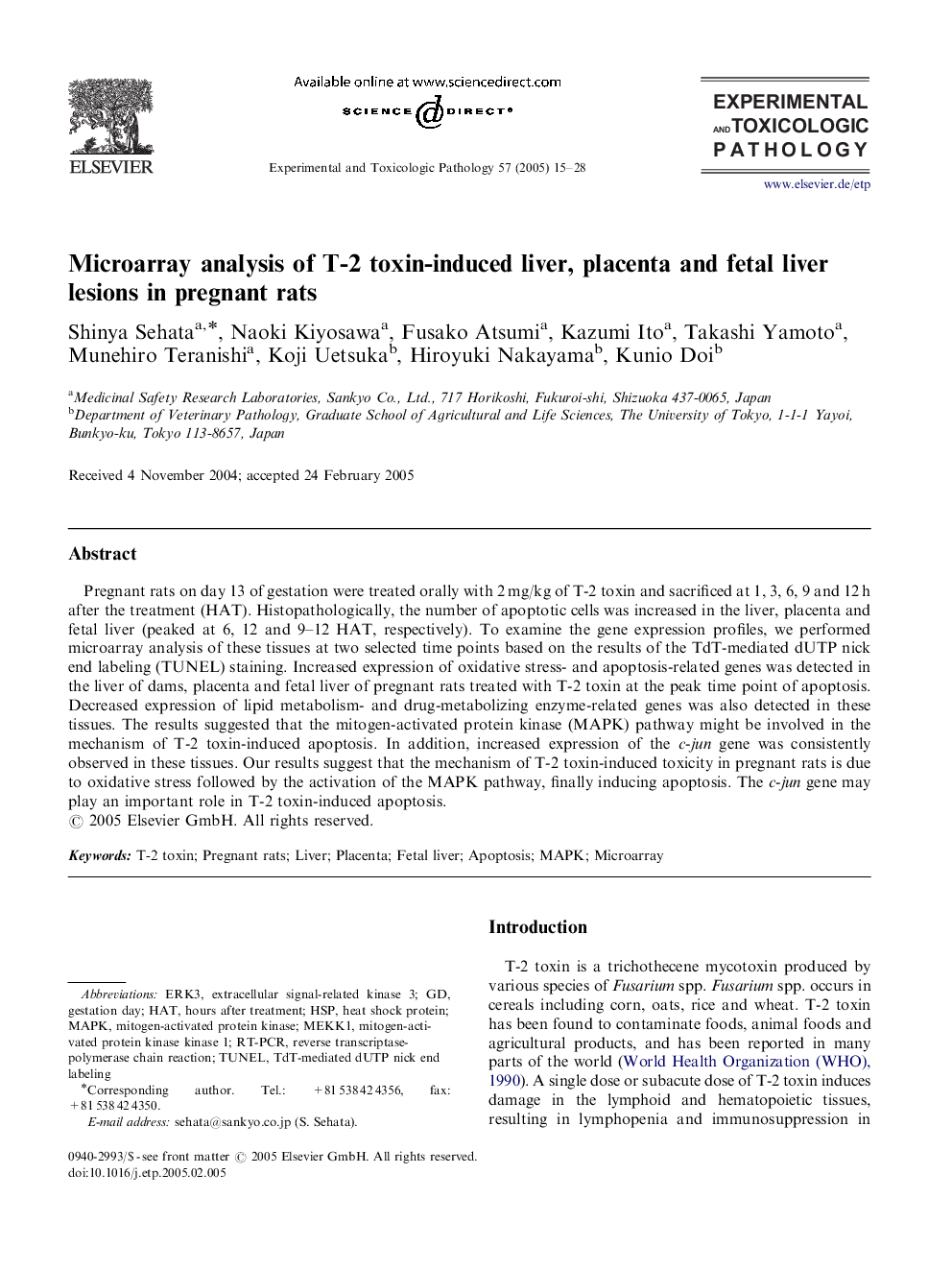| Article ID | Journal | Published Year | Pages | File Type |
|---|---|---|---|---|
| 9000328 | Experimental and Toxicologic Pathology | 2005 | 14 Pages |
Abstract
Pregnant rats on day 13 of gestation were treated orally with 2Â mg/kg of T-2 toxin and sacrificed at 1, 3, 6, 9 and 12Â h after the treatment (HAT). Histopathologically, the number of apoptotic cells was increased in the liver, placenta and fetal liver (peaked at 6, 12 and 9-12 HAT, respectively). To examine the gene expression profiles, we performed microarray analysis of these tissues at two selected time points based on the results of the TdT-mediated dUTP nick end labeling (TUNEL) staining. Increased expression of oxidative stress- and apoptosis-related genes was detected in the liver of dams, placenta and fetal liver of pregnant rats treated with T-2 toxin at the peak time point of apoptosis. Decreased expression of lipid metabolism- and drug-metabolizing enzyme-related genes was also detected in these tissues. The results suggested that the mitogen-activated protein kinase (MAPK) pathway might be involved in the mechanism of T-2 toxin-induced apoptosis. In addition, increased expression of the c-jun gene was consistently observed in these tissues. Our results suggest that the mechanism of T-2 toxin-induced toxicity in pregnant rats is due to oxidative stress followed by the activation of the MAPK pathway, finally inducing apoptosis. The c-jun gene may play an important role in T-2 toxin-induced apoptosis.
Keywords
Related Topics
Life Sciences
Agricultural and Biological Sciences
Animal Science and Zoology
Authors
Shinya Sehata, Naoki Kiyosawa, Fusako Atsumi, Kazumi Ito, Takashi Yamoto, Munehiro Teranishi, Koji Uetsuka, Hiroyuki Nakayama, Kunio Doi,
